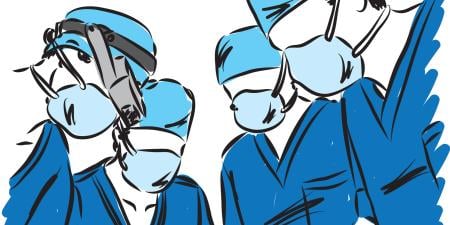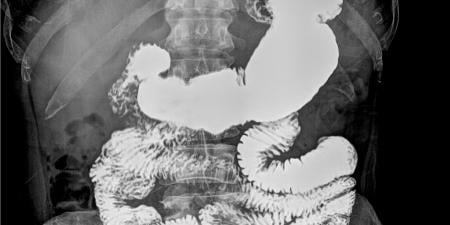Let's say you are 20 years old. You are embarrassed by what you call your "Roman nose." You look in the mirror and see a "weak chin." You want more prominent cheekbones. You are tired of having acne. You wish you were more popular. You like your current friends but wouldn't mind finding more attractive replacements for them. What would you do? Well, if you are Mike and Matt Schlepp, 2 brothers from Arizona, you decide to undergo rhinoplasty, get chin implants, and obtain porcelain veneers in order to resemble Brad Pitt. One brother prefers the look of Pitt in Meet Joe Black. The other brother wants his look from Legends of the Fall.
Mike and Matt are 2 participants on the MTV series, "I Want a Famous Face." The program features individuals undergoing cosmetic surgery because they hope to acquire the face and physique of particular celebrities. Five other individuals join the brothers in their quest for celebrity bodies, from Elvis to Jennifer Lopez and Kate Winslet. "I Want a Famous Face" takes fantasies about beauty and stardom and inscribes them on flesh. Call it cosmetic surgery karaoke.
"I Want a Famous Face" premiered last March. "The Swan" began one month later on Fox. In "The Swan," 16 contestants, all women, subject themselves to cosmetic surgery in a competition to see who will win the beauty pageant held at the end of the series. The show selects women characterized by the program as "ugly ducklings" and offers them cosmetic surgery to determine who will emerge as the victorious "swan." Though participants work with a therapist, trainer, cosmetic dentist, and "life coach," the series focuses upon the multiple surgeries each woman undergoes. The list of procedures for one woman, Cindy, includes: endobrow lift, mid-face lift, cheek fat removal, fat removal under eyes, lip augmentation, liposuction of face, chin refinement, fotofacial, laser hair removal, collagen, Lasik surgery, breast augmentation, tummy tuck, and liposuction of inner thighs. Other contestants undergo similar procedures.
In 2002, ABC's "Extreme Makeover" initiated the trend in television series featuring cosmetic surgery procedures. "Extreme Makeover" documents men and women undergoing multiple surgeries before revealing their new features to family members and friends. A typical list of procedures for someone appearing on "Extreme Makeover" includes liposuction of the abdomen, medial thighs, and arms, breast augmentation, brow lift, rhinoplasty, upper eyelid lift, fotofacials, chemical peels, laser treatment for acne, scalp treatment, porcelain veneers, and teeth whitening. Compared to this list of procedures, the surgery performed on "I Want a Famous Face"seems almost minimalist.
The dominant message conveyed by each of these 3 programs is remarkably similar. Each series suggests that to undergo an "extreme makeover" is to experience a rite of passage requiring a death and resulting in a rebirth. The old and inadequate face, body, and self are surgically excised and a new, more attractive, sophisticated, and engaging "personality" emerges. The ugly duckling of the old body and self must succumb to the blade for the swan to take flight. Promotional material for these programs draws upon the rhetoric of psychological growth, personal transformation, and spiritual fulfillment. The new bodies do not just have bigger breasts, more pronounced cheekbones, and whiter teeth. Rather, the programs suggest that individuals undergoing multiple cosmetic surgery procedures become livelier, more outgoing, and psychologically content individuals. Personal growth or spiritual development used to be connected to taking a pilgrimage to Thailand, watching Oprah, or training for marathon runs. Now, apparently, you need buttock implants or breast augmentation to let your authentic self emerge.
Feminist critiques of cosmetic surgery typically draw attention to the sexism and outright misogyny of many forms of cosmetic surgery. All 3 programs suggest that the beautiful female body has large, gravity defying breasts jutting from an impossibly lithe body. All signs of aging and maturity must be excised; the attractive, sexual body has a permanently youthful look. "The Swan," with its competition amongst women, its characterization of women as "ugly ducklings" prior to their surgeries, and its shudder-inducing beauty pageant is the most overtly misogynistic of the 3 programs. The primary responsibility of women, this program suggests, is to look attractive. Problems at home, a troubled marriage, inattentiveness from a spouse or partner, and lack of opportunities in the workplace can all be fixed through cosmetic surgery, regimented dieting, and visits to a "life coach."
Though a wide misogynistic streak runs through all three programs, "Extreme Makeover" and "I Want a Famous Face" include male participants. Accordingly, they illustrate important features of this new "genre" of television programming that go beyond female bodies, the "male gaze," and women as the primary objects of cosmetic surgery.
"Extreme Makeover" demonstrates that both men and women can become convinced of the notion that psychological and spiritual rebirth will result from surgical modification of the body. The series reveals that both men and women are influenced by particular social stereotypes of what constitutes "beautiful" bodies. To lead a truly fulfilling, rewarding life, this program suggests, you need sparkling white teeth, a full head of hair, a svelte body, smooth skin, sparkling eyes, an unfurrowed brow, full lips, firm buttocks, and tight thighs. To deviate from this standard is to reveal physical failings, spiritual torpor, and psychological flaws.
"I Want a Famous Face" offers the most literalistic reading of how ideal bodies are defined. The individuals featured on this show do not have vague notions of beauty, attractiveness, or bodily "perfection." Rather, they want Pamela Anderson's breasts, Brad Pitt's chin, and Jennifer Lopez's buttocks. "I Want a Famous Face" reveals one pervasive source of images of the beautiful body. If the fantasies of the participants on the series provide a window onto broader trends in popular culture, movie idols and pop stars are playing iconic functions in shaping public perceptions of beauty, youthfulness, and attractiveness. Music videos, television programs, and Hollywood films send powerful messages about what constitutes ideal body types. Of course, simply to blame "Hollywood" for the current appeal of multiple cosmetic surgery procedures is to oversimplify. When movie stars and pop stars have breast implants, face lifts, Botox injections, liposuction, and collagen infusions they both shape and are shaped by popular notions of beautiful bodies.
Perhaps the most intriguing aspect of the 3 series is the near total absence of discussion of moral considerations. Family members' reservations about the benefits of cosmetic surgery are largely dismissed. Participants on the series are viewed as autonomous decision makers; they know what they want, and the role of cosmetic surgeons is to fulfill their wishes. "I Want a Famous Face" is the one program that directly addresses the influence of coercive forces upon the decision making of participants. The website for the program notes that the show did not pay for any of the surgeries. All 3 programs neglect other moral issues. Questions of risks and long-term consequences are minimized even though many of the operations involve invasive procedures and require general anesthesia. The cosmetic surgeons on these programs are willing and eager to provide the multiple cosmetic surgeries requested by program participants. The programs do not attend to the individual and communal harms associated with promoting particular social norms about what constitutes "beautiful" bodies. Cosmetic surgery is simply offered as a panacea for what are clearly complex social and emotional problems. The programs ignore the consequences of characterizing surgeons as amoral technicians guided only by aesthetic preferences and the desires of their patients. There is no examination of whether the provision of multiple cosmetic surgery procedures in a televised context violates professional norms, poses a challenge to notions of professional integrity, and makes cosmetic surgeons complicit in promoting narrow, damaging notions of beauty.
Finally, "Extreme Makeover," "The Swan," and "I Want a Famous Face" all contribute to the widespread social normalization of cosmetic surgery. They place cosmetic surgery on a continuum with taking yoga classes, dieting, psychological counseling, and visiting the gym. Complicit in promoting highly circumscribed notions of beauty and attractiveness, the programs routinely ignore the question of whether there might be aspects of life more important than having a particular physique. As I scrolled through the post-surgery faces on the websites for these programs, the contestants all seemed oddly alike: the women have large breasts and thin bodies, and the men have firm chins and chiseled cheekbones.
Medical parentalism—the notion that to be a physician means to promote and defend particular moral norms regardless of the individual preferences of the patient—has fallen into disrepute. Every first year medical student is introduced to the notion of respect for patient autonomy. However, situated within market constraints, advertising, and attenuated notions of "ideal" body types, the ethic of personal autonomy leads to the strangest of outcomes. You are free to decide whether you would prefer to resemble J. Lo or Kate Winslet, Elvis Presley or Brad Pitt. Fortunately, life coaches are available to help with these difficult decisions.



